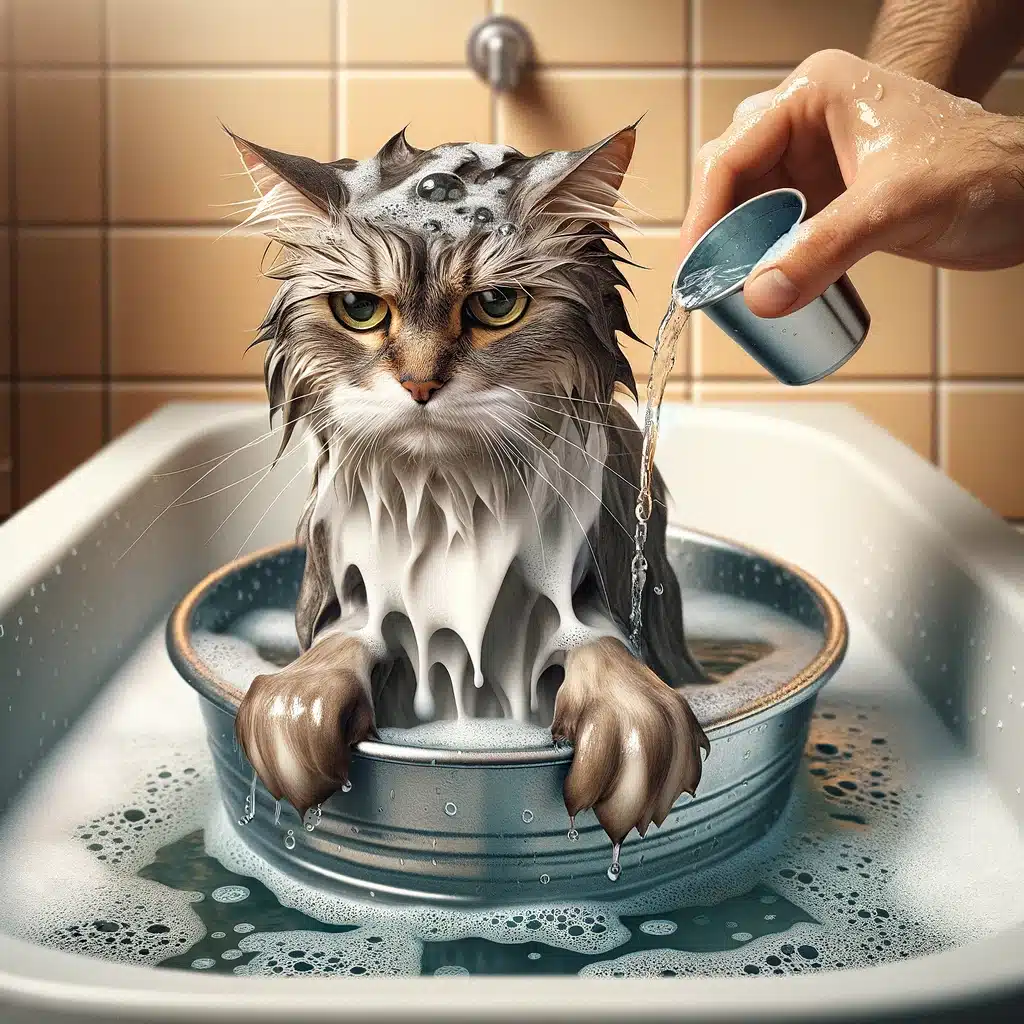
Bathing your cat might not be the first task you think of in pet care, yet it plays a crucial role in your furry companion’s health and hygiene. Despite cats being renowned for their meticulous self-grooming, there are occasions where a bit of help from their human friends is beneficial, especially during shedding periods or after a particularly messy adventure. This guide aims to simplify the cat-bathing process, ensuring it’s a smooth experience for both you and your pet.
Pre-Bath Preparation
Brush Your Cat Regularly
Initiating the grooming process with regular brushing is key. This practice not only aids in removing loose fur and minimizing shedding but also helps in detangling and preventing mats in their coat, which can be uncomfortable and challenging to remove. The type of grooming tool used should correspond with your cat’s fur length—a soft brush or grooming glove suits short-haired breeds, while a wide-toothed comb is better for long-haired varieties. For an in-depth grooming guide, How to Give Your Cat a Bath—Plus, How Often You Actually… offers valuable insights into the importance of consistent grooming.
Gathering Supplies
Before initiating the bath, assemble all necessary items. This includes a non-slip mat for the sink or tub to prevent slipping, and cat-specific shampoo, as human products can cause skin irritation or be harmful if ingested. For comprehensive preparation tips, Survival of the Fittest: How to Safely Bathe Your Cat is an excellent resource.
The Bathing Process
Assessing the Need for a Bath
It’s crucial to recognize that not all cats require frequent baths. Bathing should be done as needed, such as in cases where your cat has gotten into something unpleasant. Use lukewarm water to fill the sink, ensuring it’s neither too hot nor too cold, to provide a comfortable experience for your cat.
Shampoo Application
Carefully wet your cat’s coat using a cup or a soaked towel, then apply a cat-safe shampoo. It’s important to avoid getting water or shampoo in their eyes, ears, or nose. Thorough rinsing is essential to remove all shampoo residue, as highlighted in Bath Time! Why and How You Should Bathe Your Cat, to avoid any skin irritation.
After the Bath
Drying Off
Post-bath, gently wrap your cat in a soft, warm towel and pat their fur dry. If your cat doesn’t mind the noise, using a hairdryer on the lowest setting can help speed up the drying process. Otherwise, let them dry in a warm, draft-free spot. Patience and a gentle approach are crucial for a positive experience.
Additional Care Tips
Ear and Nail Care
Before bathing, it’s also a good idea to clean your cat’s ears and trim their nails. This not only helps in maintaining overall hygiene but also reduces the risk of scratches during the bath. For tips on how to perform these tasks gently and safely, How to Survive Giving Your Cat a Bath provides useful advice.
Flea Prevention
Bathing can be an effective method for flea control. If your cat has fleas, using a flea treatment shampoo during the bath can help eliminate fleas and flea dirt. However, it’s important to choose a product that’s safe for cats and to follow up with a comprehensive flea control plan. For more information on managing fleas, Bathing Cats: Everything You Need to Know by Purina offers detailed guidance.

Acclimating Your Cat to Water
If your cat dislikes water, slowly acclimating them to the sensation can make bath time less stressful. Start by introducing them to small amounts of water and gradually increase their exposure. Positive reinforcement and patience are key. For strategies on helping your cat get used to baths, When You Should—And Shouldn’t—Give Your Cat A Bath provides expert advice.
Frequently Asked Questions
Q: How often should I bathe my cat?
A: Bathing should be based on necessity. While cats are efficient self-groomers, situations like excessive shedding or getting into something dirty may require a bath.
Q: Is human shampoo safe for cats?
A: No, always use cat-specific shampoo to avoid potential skin irritation or toxicity.
Q: How can I make bath time less stressful for my cat?
A: Regular brushing helps your cat get accustomed to being handled. Use lukewarm water and a non-slip mat, and maintain a calm demeanor. For cats particularly averse to water, consulting a cat behaviorist may offer additional strategies.
Conclusion
Bathing your cat can be a straightforward task with the right preparation and approach. By following these guidelines, you can ensure a safe and stress-free experience for you and your cat, enhancing their health and cleanliness.





